A residential lease contract might seem like a straightforward legal term, yet do you truly comprehend the distinctions between a fundamental rental contract and a residential lease? In this discussion, we delve into the essentials of a standard residential lease agreement, equipping you with the knowledge necessary for creating or understanding a residential lease agreement form, regardless of whether you are the landlord or the tenant.
Table of Contents
What is a residential lease agreement?

A residential lease agreement is a legally binding contract between a landlord (lessor) and a tenant (lessee) that outlines the terms and conditions for renting a residential property. This agreement typically includes information such as the duration of the lease, monthly rent, security deposit, maintenance responsibilities, and rules for occupancy. The document ensures that both parties understand their rights and obligations, helping to prevent misunderstandings and disputes during the tenancy period.
Residential Lease Agreement Templates
Secure your residential property rental agreements with confidence using our comprehensive collection of Residential Lease Agreement Templates. These free, printable templates provide a legally binding framework for landlords and tenants to establish clear and mutually beneficial rental agreements. With customizable sections covering key terms such as lease duration, rent amount, security deposit, maintenance responsibilities, and more, our templates ensure that all parties understand their rights and obligations.
Whether you’re a property owner renting out a house or an individual looking for a place to call home, our Residential Lease Agreement Templates simplify the process and protect the interests of both landlords and tenants. Download now and establish a solid foundation for a successful residential rental experience.
Who needs a Residential Lease Agreement?
A residential lease agreement is necessary for both landlords and tenants who are entering into a rental arrangement for a residential property. This includes situations where:
Landlords: Property owners who are renting out their residential properties, such as single-family homes, apartments, condominiums, or townhouses, need a lease agreement to establish the terms and conditions for the rental. The agreement helps protect their property, set forth expectations for tenant behavior, and ensure a steady rental income.
Tenants: Individuals or families seeking to rent a residential property need a lease agreement to secure their rights to the property, understand their responsibilities, and ensure a stable living situation. The lease agreement outlines their obligations concerning rent payments, maintenance, and other aspects of the rental relationship.
In summary, anyone involved in the rental of a residential property, whether as a landlord or tenant, needs a residential lease agreement to establish a legally binding relationship and clarify the terms of the rental arrangement. This helps protect the interests of both parties and minimize potential disputes during the tenancy.
What should a residential lease agreement include?
A comprehensive residential lease agreement should include the following elements to ensure that both the landlord and tenant are well-informed of their rights and responsibilities during the rental period:
Identification of the parties: The full names and contact information of the landlord and tenant should be included to identify the parties involved in the agreement.
Property description: A detailed description of the rental property, including the address, type of property (e.g., apartment, house, or condominium), and any specific features, such as the number of bedrooms, bathrooms, and parking spaces.
Term of the lease: The start and end dates of the lease term, specifying whether it is a fixed-term or month-to-month agreement. If the lease is renewable, include the renewal terms and notice requirements.
Rent payment: The amount of the monthly rent, the due date, and the preferred payment method should be clearly stated. Additional details may include late fees, grace periods, and penalties for bounced checks.
Security deposit: The amount of the security deposit required, the purpose of the deposit, and the conditions under which it may be withheld or returned to the tenant should be specified.
Maintenance and repairs: Clearly outline the responsibilities of both the landlord and tenant for maintaining the property, including who is responsible for repairs, lawn care, snow removal, and pest control.
Utilities: Indicate which utilities (e.g., water, electricity, gas, internet) are included in the rent and which are the tenant’s responsibility.
Rules and regulations: Specify any rules governing the use of the property, such as restrictions on smoking, noise levels, or the number of occupants. Include any applicable homeowner association (HOA) rules if relevant.
Alterations and improvements: Define the tenant’s rights to make alterations or improvements to the property, and whether the landlord’s permission is required for such changes.
Pets: State the landlord’s policy on pets, including any restrictions on types, sizes, or breeds, and whether a pet deposit or additional rent is required.
Termination and notice: Describe the conditions under which the lease may be terminated by either party and the required notice period for termination.
Default and remedies: Specify the consequences for the tenant’s default on the lease terms, such as non-payment of rent, and the landlord’s remedies in such cases.
Subletting and assignment: Clarify whether the tenant is allowed to sublet or assign the lease to another person, and if so, under what conditions.
Entry by the landlord: Outline the circumstances under which the landlord may enter the property, such as for inspections, repairs, or emergencies, and the required notice period.
Dispute resolution: Specify how disputes between the landlord and tenant should be resolved, whether through mediation, arbitration, or litigation.
Governing law: Indicate the state law governing the lease agreement and the jurisdiction for any legal disputes.
Additional clauses: Include any other relevant clauses, such as renters insurance requirements, lead-based paint disclosures, or bed bug disclosures, depending on local laws and regulations.
Signatures: The lease agreement should be signed and dated by both the landlord and tenant to acknowledge their acceptance of the terms and conditions.
Advantages and Disadvantages of a Residential Lease Agreement
A residential lease agreement, like any legal contract, has its own set of advantages and disadvantages. By understanding these aspects, both landlords and tenants can make informed decisions when entering into a lease agreement.
Advantages:
Legal protection: A well-drafted lease agreement provides legal protection to both the landlord and tenant by clearly outlining their respective rights and responsibilities. This can help prevent misunderstandings and disputes during the tenancy.
Rent stability: A fixed-term lease agreement offers rent stability for both parties, as the rent amount is agreed upon and locked in for the duration of the lease term. This ensures that the tenant will not face unexpected rent increases, and the landlord can rely on a steady income.
Property maintenance: Lease agreements typically specify the responsibilities for property maintenance and repairs, which can help ensure the property remains in good condition and holds its value over time.
Tenant screening: A lease agreement allows the landlord to set specific requirements for prospective tenants, such as credit scores, employment history, or references, which can help secure responsible and reliable tenants.
Rules and regulations: Lease agreements often include rules and regulations for the property, such as restrictions on smoking, pets, or noise levels. This can help maintain a peaceful living environment for all tenants and protect the landlord’s property from damage.
Disadvantages:
Limited flexibility: A fixed-term lease agreement can limit the flexibility of both parties. Tenants may face penalties for breaking the lease early, and landlords may have difficulty evicting a problematic tenant before the lease term ends.
Vacancy risk: When a lease term ends, the landlord may face the risk of vacancy if they are unable to find a new tenant quickly. This could result in a loss of rental income and additional costs to advertise and prepare the property for new tenants.
Legal complexities: Lease agreements must comply with local and state laws, which can be complex and vary across jurisdictions. Landlords may need to seek legal advice to ensure their lease agreements are legally sound, which can be time-consuming and costly.
Maintenance responsibilities: Although lease agreements typically specify maintenance responsibilities, landlords may still face the burden of dealing with maintenance issues and the associated costs, especially if the tenant is uncooperative or neglectful.
Disputes and litigation: Despite the legal protection offered by lease agreements, disputes between landlords and tenants can still arise. Resolving these disputes can be time-consuming, stressful, and costly, particularly if the matter escalates to litigation.
Types of Residential Leases
There are several types of residential leases, each with its own unique characteristics, advantages, and disadvantages. Understanding these different lease types can help landlords and tenants choose the most suitable option for their needs:
Fixed-term Lease: This is the most common type of residential lease, in which the tenant agrees to rent the property for a specified period, usually 6 months, 12 months, or even longer. The rent amount and other terms remain fixed during this period, providing stability for both parties. When the lease term ends, it can either be renewed, renegotiated, or terminated.
Month-to-Month Lease: Also known as a periodic or rolling lease, a month-to-month lease has no fixed end date and renews automatically each month unless either party provides notice to terminate, typically 30 days in advance. This type of lease offers greater flexibility for both the landlord and tenant, as they can choose to end the lease with relatively short notice. However, the rent and other terms may be subject to change with proper notice.
Week-to-Week Lease: Similar to a month-to-month lease, a week-to-week lease renews automatically each week and can be terminated by either party with typically 7 days’ notice. This type of lease is less common in residential settings and may be more suitable for short-term rentals, such as vacation properties or temporary housing.
Sublease: A sublease occurs when an existing tenant (the sublessor) rents all or part of their rental property to a new tenant (the sublessee) for a specified period. The original lease between the landlord and the sublessor remains in effect, and the sublessor is still responsible for upholding the terms of the lease with the landlord. Subleasing is typically subject to the landlord’s approval and may be governed by specific rules outlined in the original lease agreement.
Rent-to-Own Lease: A rent-to-own lease, also known as a lease-option or lease-purchase agreement, combines elements of a traditional lease with the option for the tenant to purchase the property at a later date. A portion of the tenant’s rent may be credited towards the purchase price, and the tenant may have the exclusive right to buy the property during or after the lease term. This type of lease can be advantageous for tenants who are not yet ready to commit to homeownership but may want to purchase the property in the future.
Room Rental Agreement: A room rental agreement is a type of lease where the tenant rents a single room within a larger property, such as a house or apartment, which may be shared with other tenants. This type of lease typically includes shared use of common areas, such as the kitchen, living room, and bathroom, and may have specific rules regarding noise, guests, and other aspects of shared living.
How do I create a Residential Lease Agreement?
Creating a residential lease agreement can be a straightforward process if you follow these step-by-step guidelines:
Step 1: Research local laws and regulations
Familiarize yourself with the applicable laws and regulations governing residential lease agreements in your jurisdiction, including tenant and landlord rights, rent control, and other relevant ordinances.
Step 2: Collect necessary information
Gather the relevant details for the lease, such as the property address, landlord and tenant contact information, rent amount, security deposit, and any specific rules or requirements that apply to the property.
Step 3: Choose the lease type
Decide which type of lease best suits your needs, such as a fixed-term lease, month-to-month lease, or another arrangement. Consider the advantages and disadvantages of each type to make an informed decision.
Step 4: Draft the lease agreement
Using a template or sample lease agreement as a guide, draft the lease agreement, ensuring that all required elements are included, such as property description, lease term, rent payment, maintenance responsibilities, and other essential clauses.
Step 5: Review and customize
Review the lease agreement carefully, customizing any clauses or provisions to suit your specific needs and circumstances. Ensure that the lease complies with all applicable laws and regulations.
Step 6: Include disclosures and addendums
If necessary, include any required disclosures, such as lead-based paint, bed bug, or mold disclosures, as well as any additional addendums or attachments, such as a pet agreement or parking agreement.
Step 7: Obtain legal review (optional)
Consider having an attorney or legal expert review the lease agreement to ensure it is legally sound and compliant with all relevant laws and regulations.
Step 8: Present the lease to the tenant
Provide a copy of the lease agreement to the prospective tenant for their review and consideration. Be prepared to discuss any questions or concerns they may have and make any necessary revisions.
Step 9: Sign and execute the lease
Once both parties are satisfied with the lease terms, sign and date the agreement. Provide the tenant with a copy of the executed lease for their records.
Step 10: Collect the security deposit and first month’s rent
Upon signing the lease, collect the agreed-upon security deposit and first month’s rent from the tenant. Ensure that the security deposit is held in accordance with local laws and regulations.
Step 11: Perform a move-in inspection
Conduct a thorough move-in inspection with the tenant, documenting the condition of the property, and noting any pre-existing damages or defects. Provide a copy of the inspection report to the tenant for their records.
FAQs
How long is a typical residential lease agreement?
The duration of a residential lease agreement can vary, but the most common lease term is 12 months. However, shorter or longer terms, such as 6 months or 24 months, may be agreed upon depending on the preferences of the landlord and tenant.
Can a landlord increase the rent during the lease term?
In a fixed-term lease, the rent amount typically remains the same for the duration of the lease. However, in a month-to-month or periodic lease, the landlord may increase the rent with proper notice, usually 30 days, and in compliance with any applicable local laws or rent control regulations.
What is a security deposit, and how is it used?
A security deposit is a sum of money paid by the tenant to the landlord at the beginning of the lease term. It serves as a financial guarantee for the landlord to cover any unpaid rent, property damage, or lease violations caused by the tenant. The deposit is typically returned to the tenant at the end of the lease term, minus any deductions for damages or unpaid rent.
Can a landlord enter the property during the lease term?
A landlord may enter the property during the lease term under specific circumstances, such as for inspections, repairs, or emergencies, and with proper notice, typically 24-48 hours, unless immediate entry is necessary due to an emergency. The lease agreement should outline the conditions for the landlord’s entry.
What happens if a tenant needs to break the lease early?
If a tenant needs to terminate the lease before the end of the lease term, they should notify the landlord as soon as possible. The lease agreement may specify the consequences of early termination, such as forfeiting the security deposit or paying a penalty fee. However, some jurisdictions may allow tenants to break the lease without penalty under specific circumstances, such as a job relocation, military deployment, or health issues.
Can a tenant sublet the property or assign the lease to someone else?
Whether a tenant can sublet the property or assign the lease depends on the terms of the lease agreement. Some lease agreements may allow subletting or assignment with the landlord’s approval, while others may prohibit it altogether. Always consult the lease agreement for specific subletting or assignment terms.
Are pets allowed in a residential lease agreement?
The lease agreement should specify the landlord’s policy on pets, including any restrictions on types, sizes, or breeds, and whether a pet deposit or additional rent is required. Some landlords may allow pets, while others may have a strict no-pets policy.
What happens if there is a dispute between the landlord and tenant?
In the event of a dispute between the landlord and tenant, the lease agreement may specify the method for resolving the conflict, such as mediation, arbitration, or litigation. Both parties should attempt to resolve the issue amicably before escalating the matter to legal proceedings.
Can a landlord evict a tenant before the lease term ends?
A landlord may evict a tenant before the lease term ends if the tenant has violated the terms of the lease agreement, such as non-payment of rent, property damage, or other lease violations. However, the eviction process must follow the legal procedures outlined by local and state laws, which typically involve providing written notice to the tenant and obtaining a court order for eviction if the tenant does not remedy the situation.
What is the difference between a residential lease agreement and a commercial lease agreement?
A residential lease agreement pertains to renting a residential property, such as an apartment, house, or condominium, for living purposes. In contrast, a commercial lease agreement involves renting a property for business or commercial activities, such as an office, retail space, or warehouse.
What should I do if the property needs repairs during the lease term?
If the property requires repairs during the lease term, the tenant should notify the landlord as soon as possible. The lease agreement should outline the responsibilities for maintenance and repairs, including which party is responsible for specific types of repairs and the procedure for addressing maintenance issues.
Can a lease agreement be modified after it has been signed?
Yes, a lease agreement can be modified after it has been signed, but any changes must be agreed upon by both parties and documented in writing as an addendum to the original lease. Both the landlord and tenant should sign and date the addendum to make it legally binding.
What happens when the lease term ends?
When the lease term ends, the landlord and tenant may choose to renew the lease, renegotiate the terms, or terminate the agreement. If the lease is not renewed or terminated, it may automatically convert to a month-to-month lease, depending on the terms of the lease agreement and local laws.
Is a lease agreement legally binding if it is not written?
While written lease agreements are strongly recommended, an oral lease agreement can still be legally binding in some jurisdictions. However, oral agreements can be challenging to prove and enforce, and written agreements provide greater clarity and protection for both parties. It is always advisable to have a written lease agreement when renting a residential property.

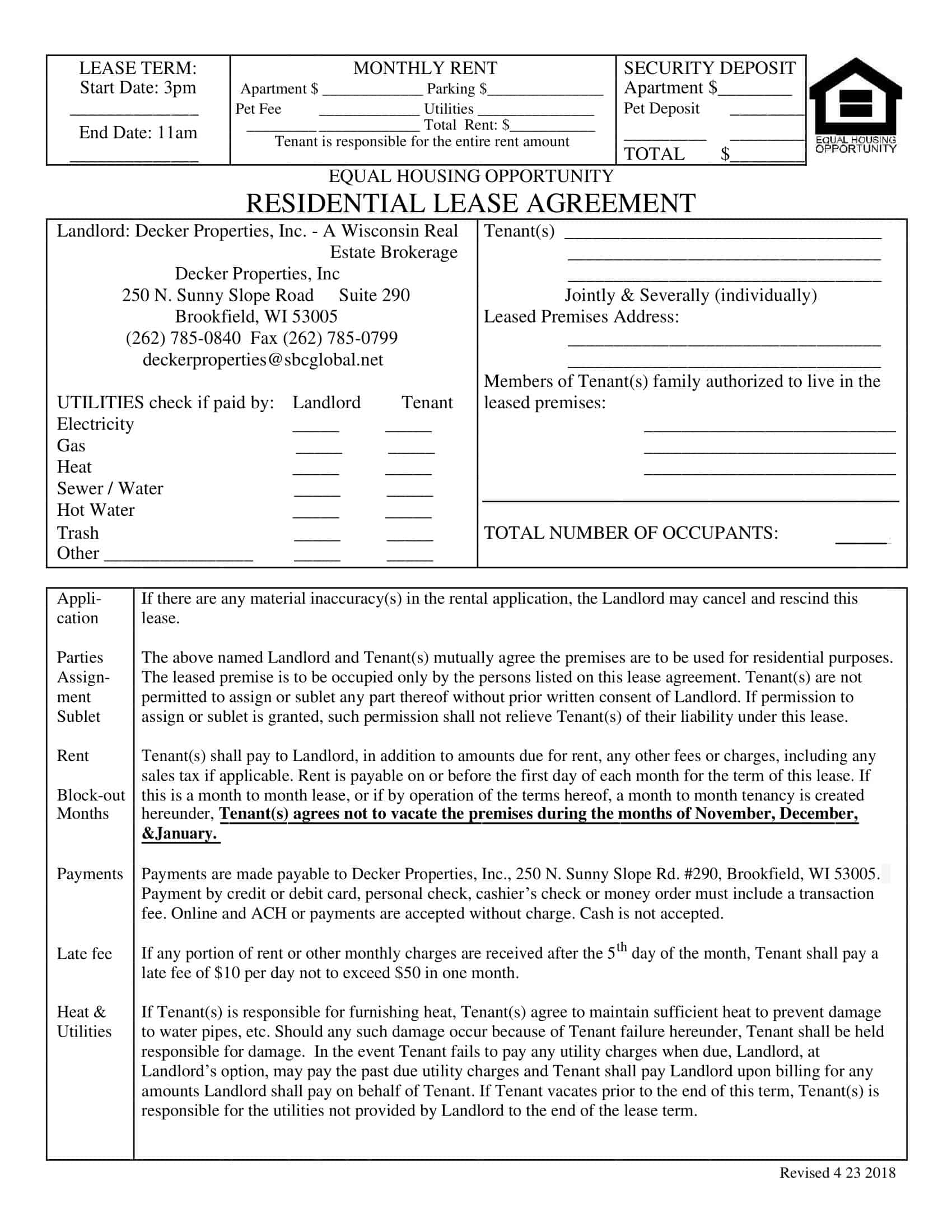
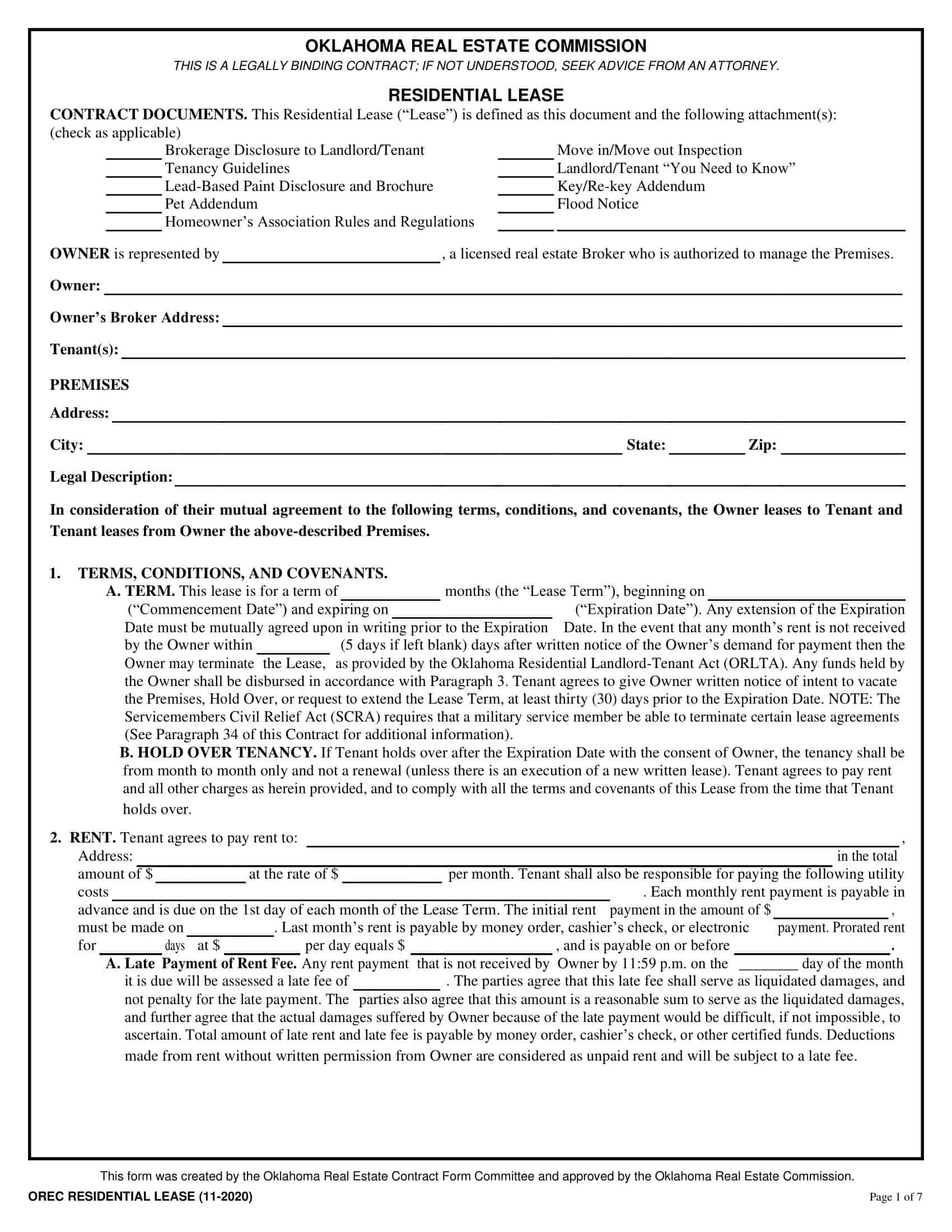





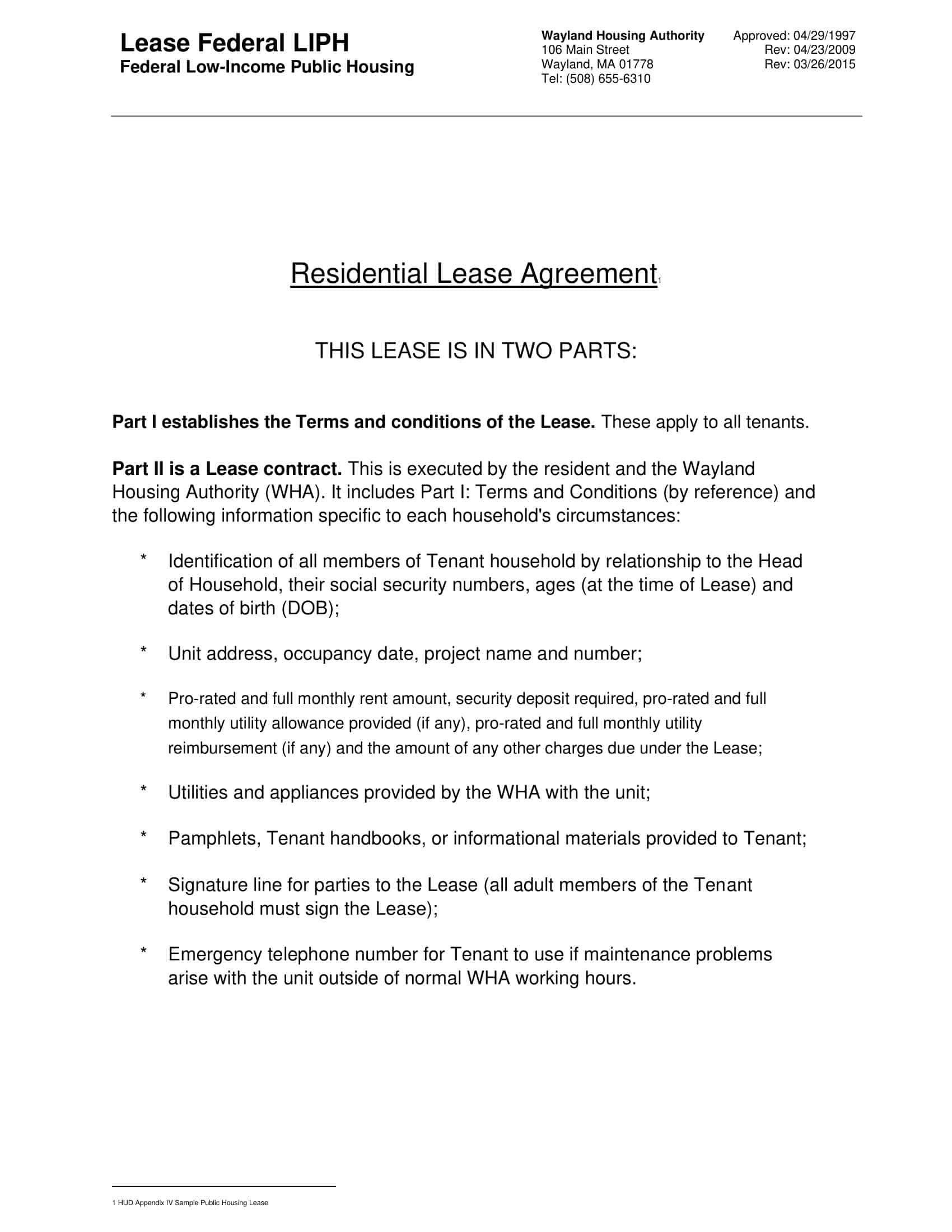







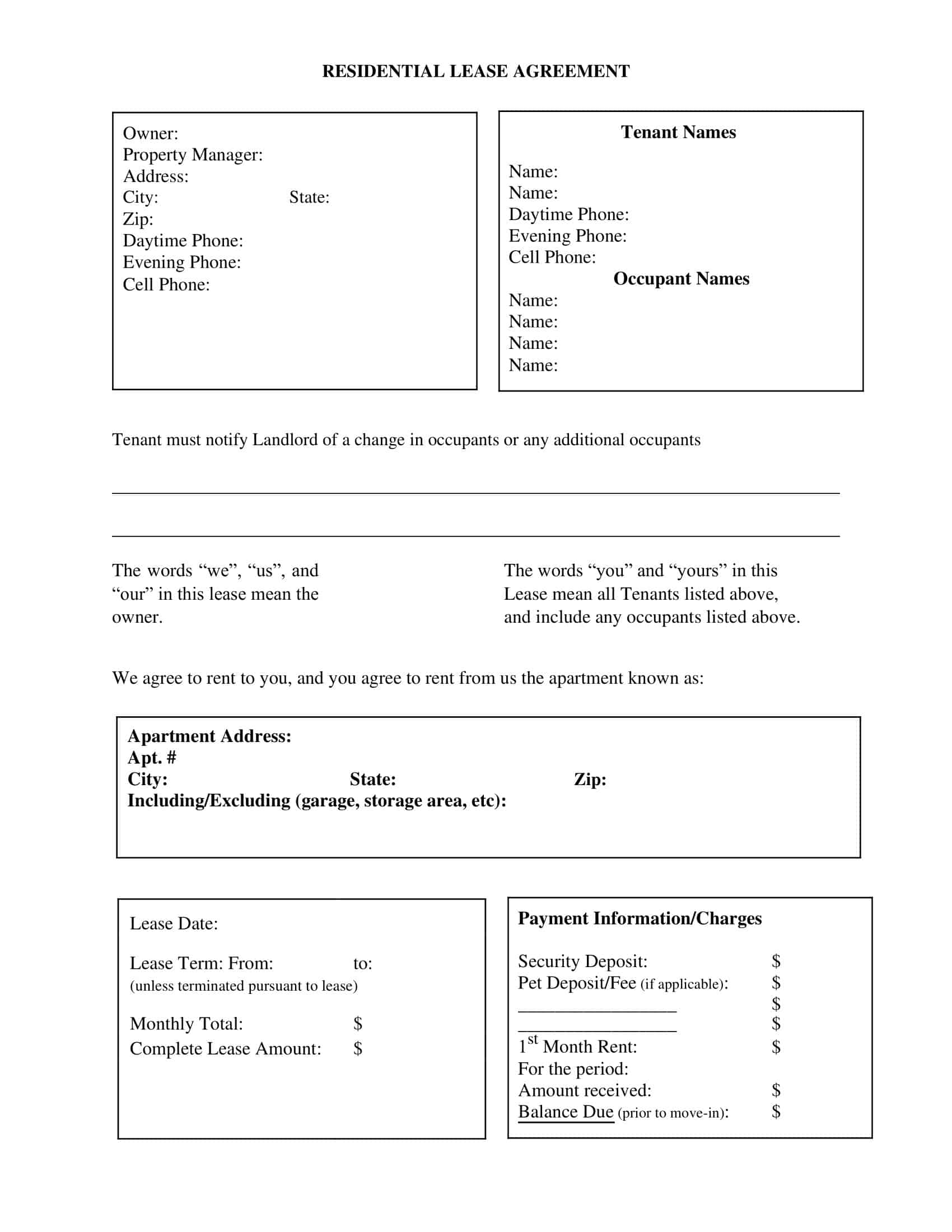

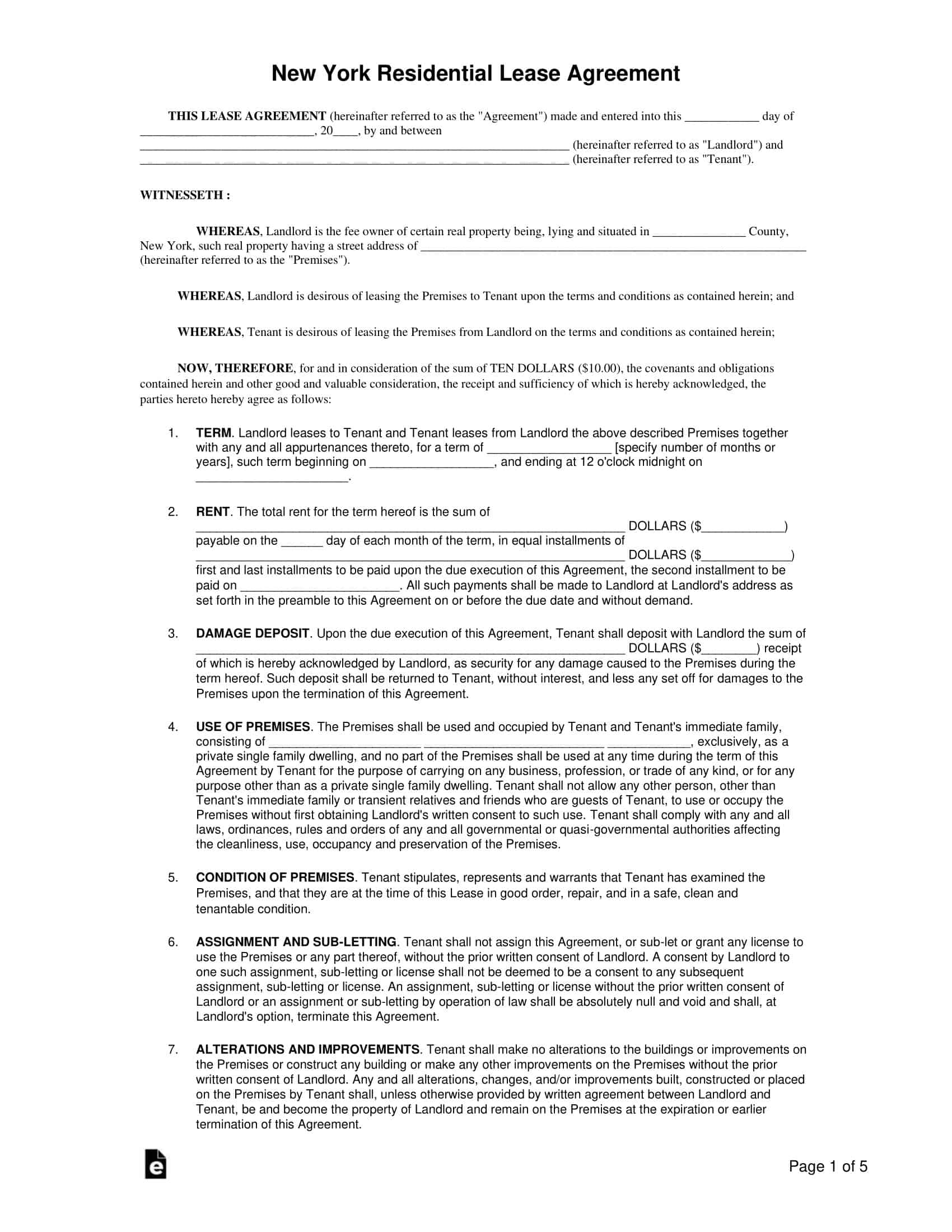
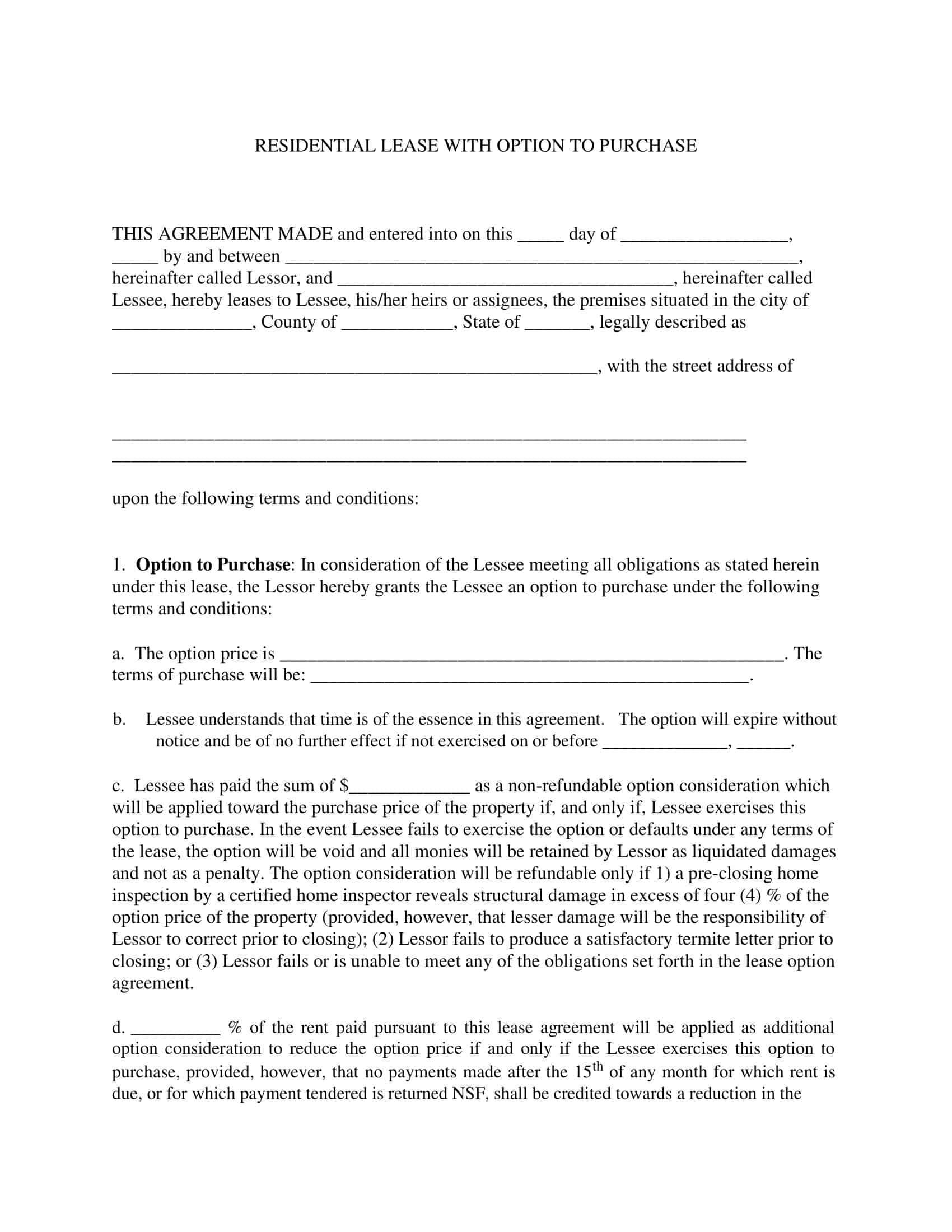





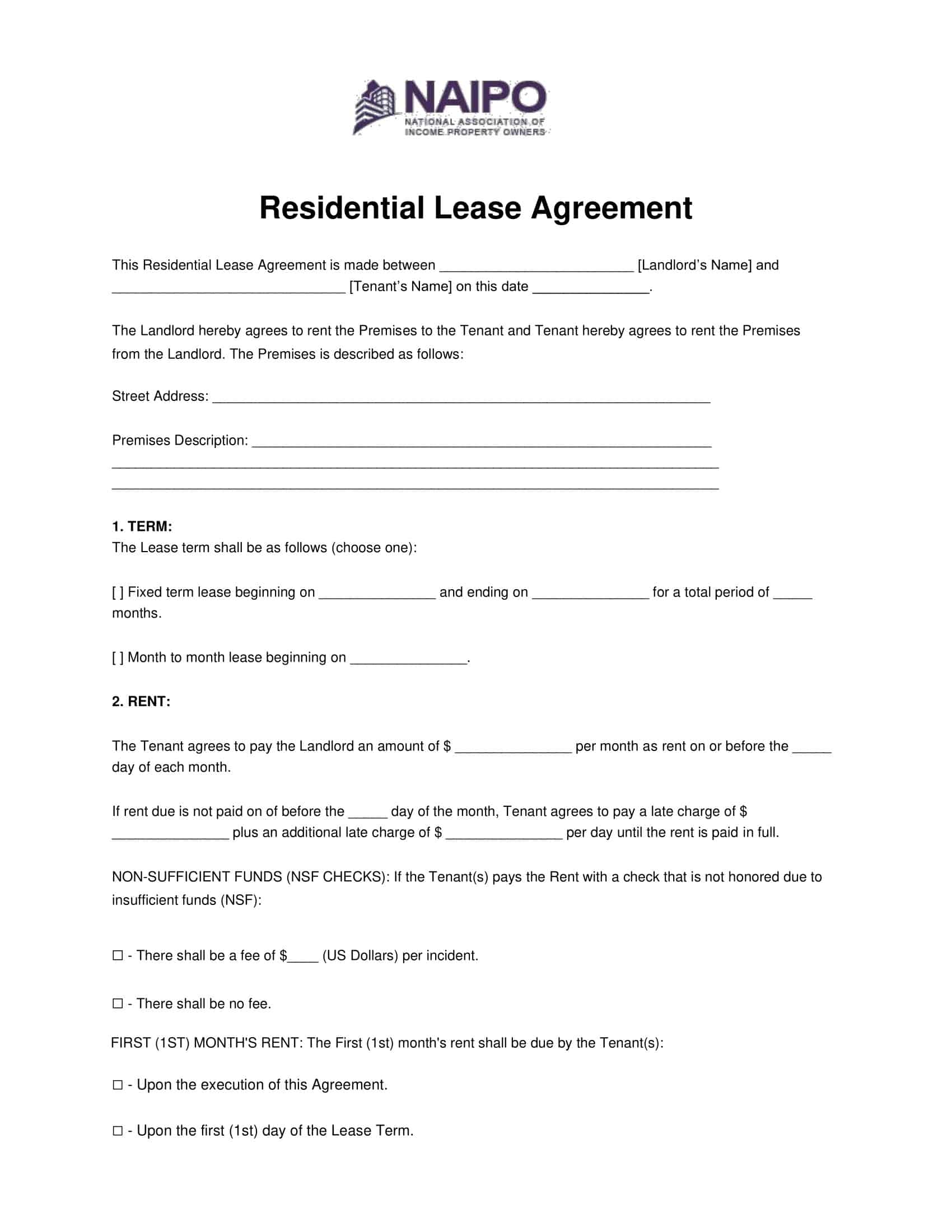





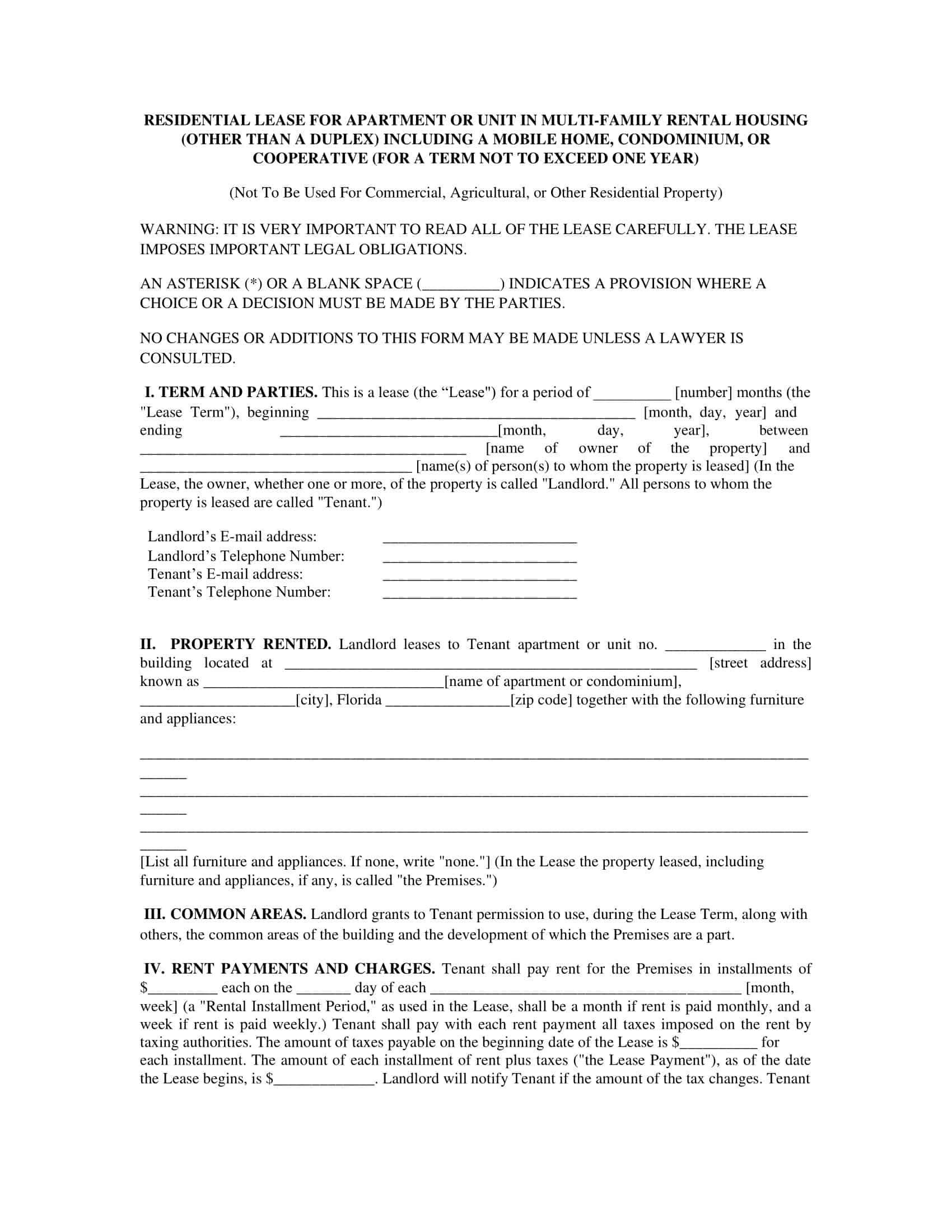
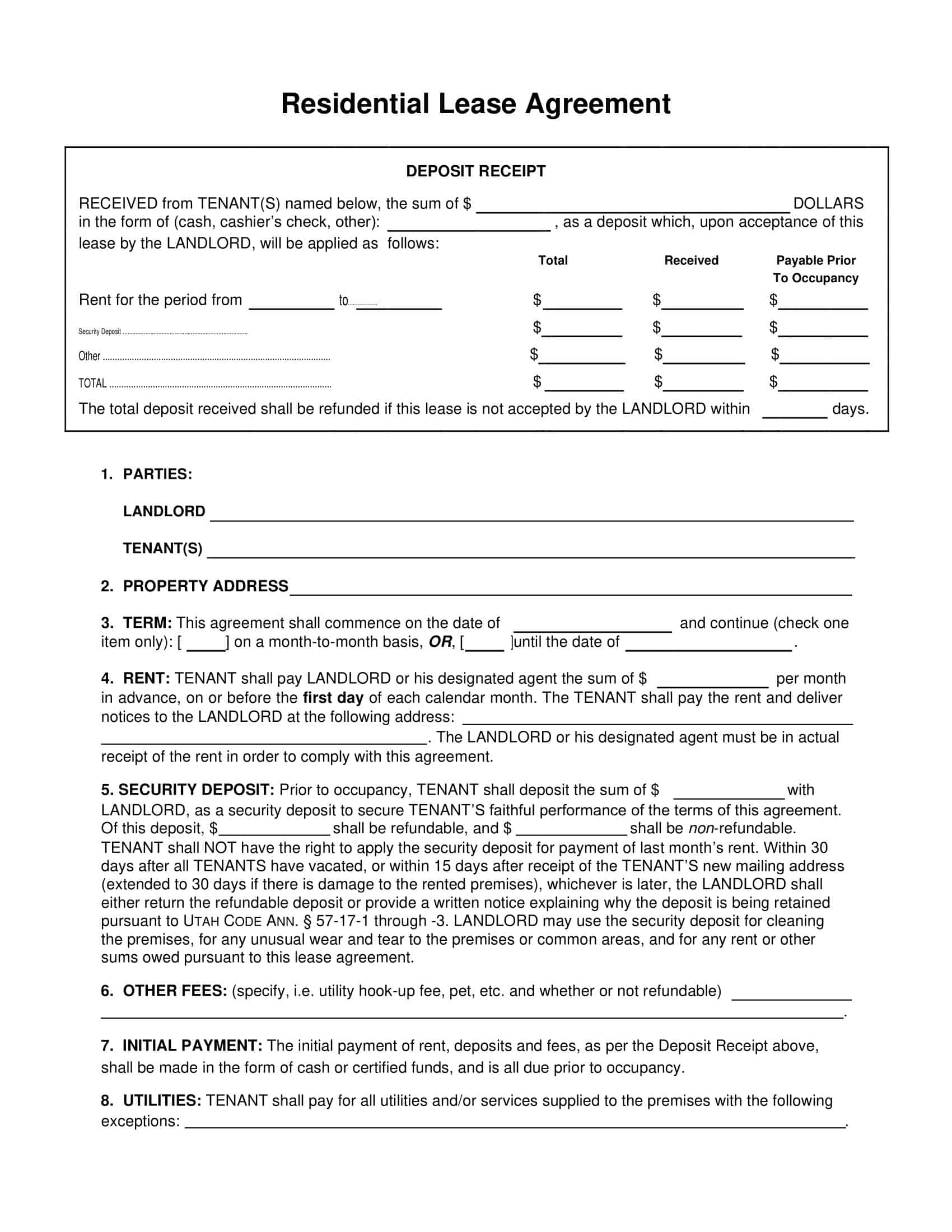






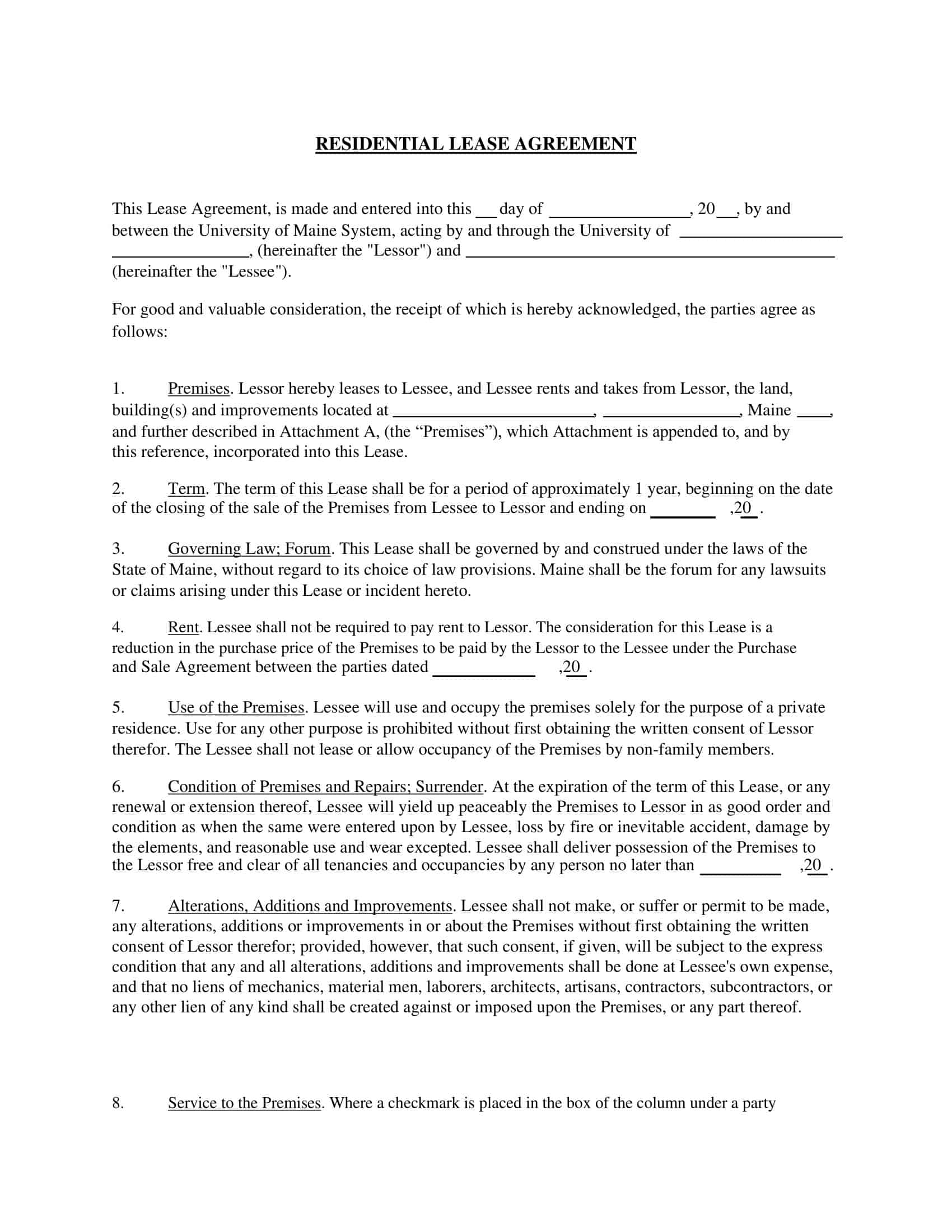

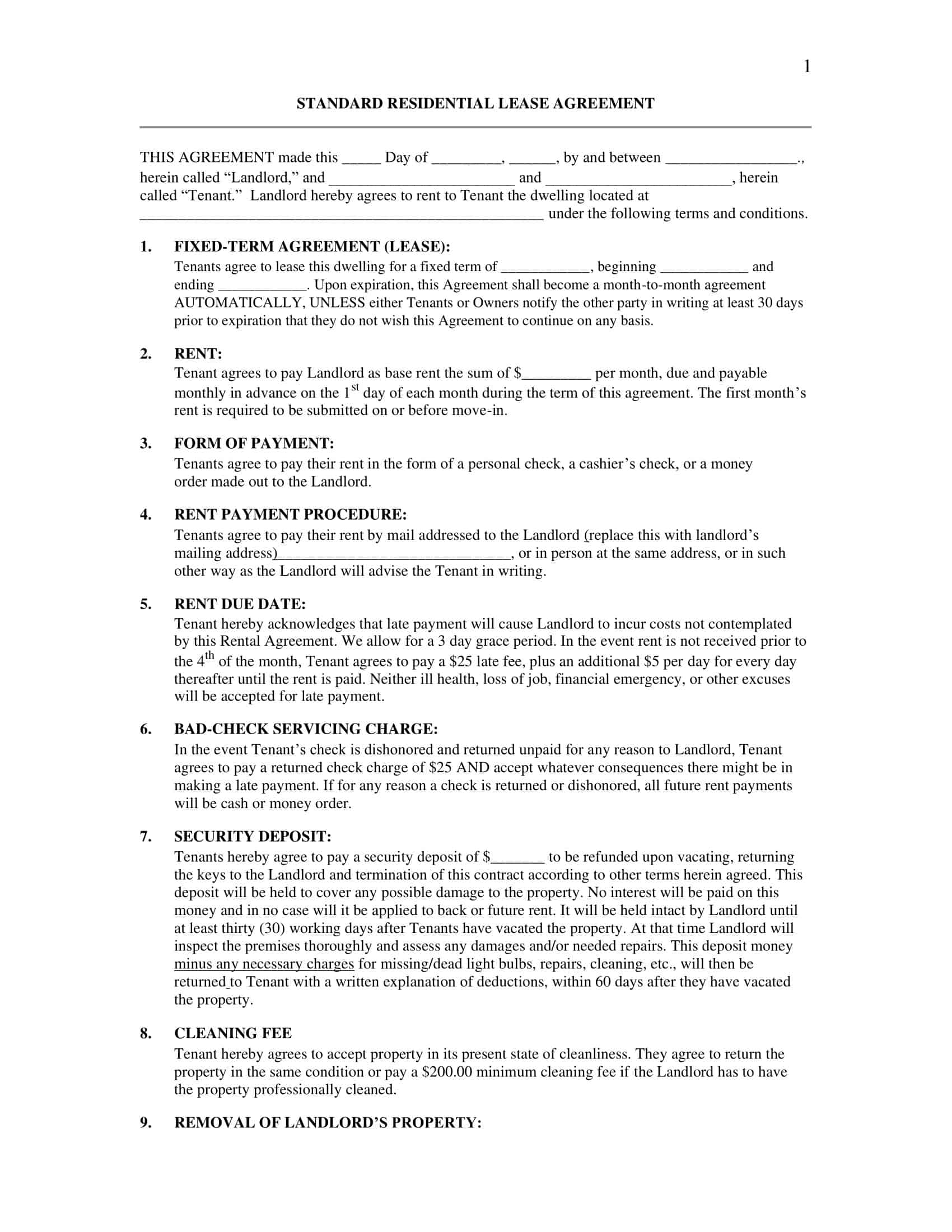

![Free Printable Roommate Agreement Templates [Word, PDF] 1 Roommate Agreement](https://www.typecalendar.com/wp-content/uploads/2023/06/Roommate-Agreement-150x150.jpg)
![Free Printable Payment Agreement Templates [PDF, Word] 2 Payment Agreement](https://www.typecalendar.com/wp-content/uploads/2023/05/Payment-Agreement-1-150x150.jpg)
![Free Printable Lease Addendum Templates [PDF, Word] 3 Lease Addendum](https://www.typecalendar.com/wp-content/uploads/2023/04/Lease-Addendum-150x150.jpg)